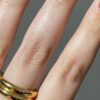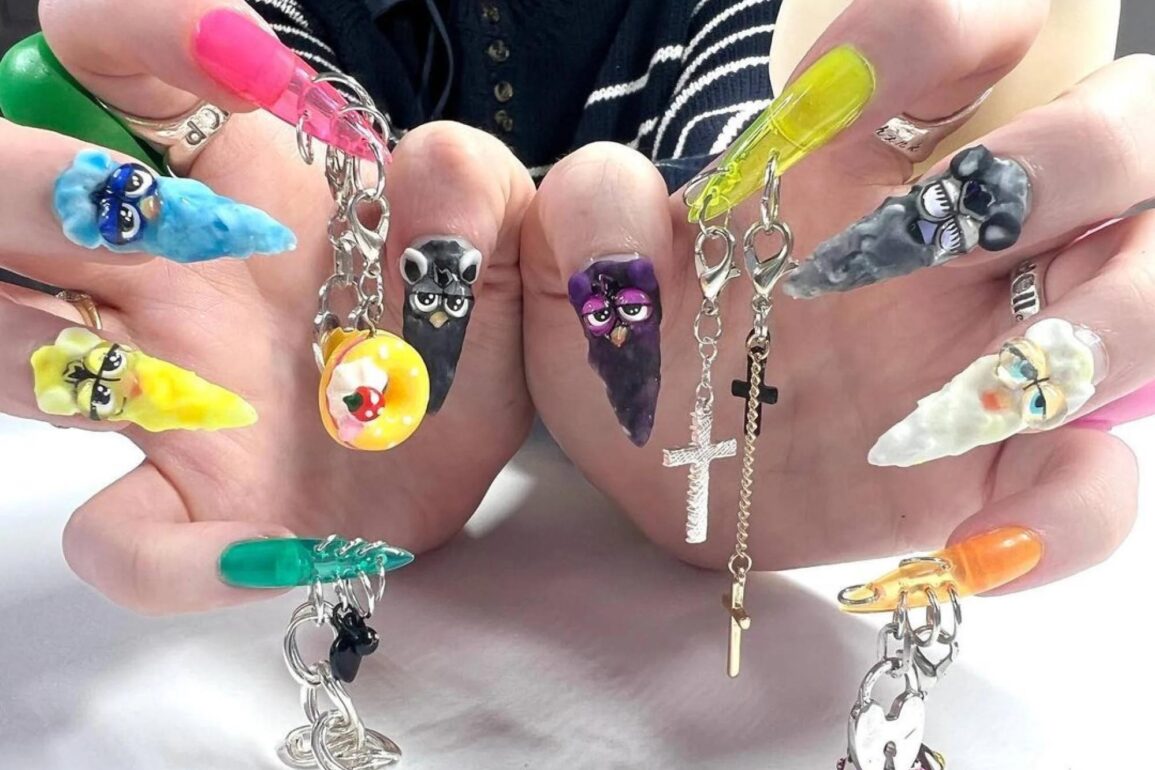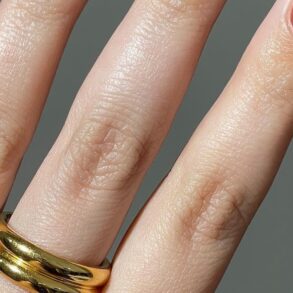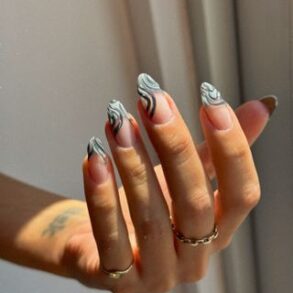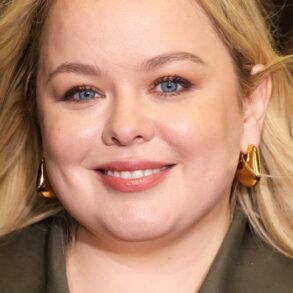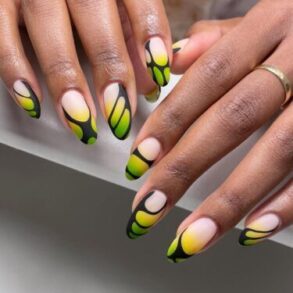
A far cry from the ‘blueberry milk’ and ‘clean girl’ manicures that dominated TikTok last year, nails in 2024 are getting bigger, more bizarre – and a lot more bankable for brands. Unauthorized logos of Louis Vuitton, Chanel and Gucci have long appeared on creative talons, but as nail art veers to the extreme and mainstream, how people are styling their fingertips is quickly becoming big business.
The market size of global nail care products was valued at $23.41 billion in 2023, according to reports, while the nail salon market is expected to reach $23.4 billion by 2032. Spherical Insights also predicts that global artificial nails market will reach $2.54 billion by 2033.
Nail art isn’t a new trend, but the sector has experienced a creative renaissance over the last few years. Today’s customer requests range from ‘cat claw’ nails to ‘pierced’ manicures, with 3D designs also trending (“3D nails” searches on Pinterest are up 35% since June).
Social media virality
Visually pleasing designs are finding popularity on social media apps, as nail art content performs exceptionally well. On Instagram, TikTok, and China’s Xiaohongshu, the stakes are getting higher as both professionals and self-taught creatives compete for virality.
The hyper-real sets from professional nail tech Vivian Xue Rahey (@vivxue) have cemented her status as one of the internet’s most popular artists, joining the likes of Mei Kawajiri (@nailsbymei) and ‘Coca’ Michelle Nguyen (@cocamichelle).
One of Rahey’s most popular videos, which shows the artist rendering scenes from such popular franchises as Harry Potter, Disney, Marvel and Sailor Moon onto press-ons, has topped 20 million views. Another clip, where Rahey designs a custom anime-inspired set for rapper Megan Thee Stallion, is just shy of 16 million.
Meanwhile, London-based self-taught artist Anouska Anastasia’s 3D creations regularly go viral on Instagram, including a video showcasing the creation of a light-up gingerbread house using moldable gel racking up 14.8 million views.
Looking east
As the market evolves, creatives are looking to Asia for new sources of inspiration. This past year has seen an exponential surge in global technicians riffing on Japanese gel manicures, a practice that typically involves different techniques, designs, and styles.
The Japanese gel aesthetic, known for its more durable formulas and ‘jelly-like’ finish, has gained significant popularity among western consumers, with international salons such as Akiko Nails on New York’s Lower East Side now specializing in custom Japanese-style designs.
The trend has also boosted business for local nail artists in Japan; in recent months, TikTok has seen an uptick in content related to tourists flocking to the country’s many salons.
Similarly in China, the detailed nail art boom has led to domestic parlors being booked months in advance. In response, skilled technicians are raising their prices, with complex techniques such as gradient shading, embossing, and the use of precious materials costing up to 10,000 RMB ($1,400).
Nails, messaging and branding
On an international scale, celebrities and style icons are boosting the cultural relevance of nail art. After posting an ASMR-style video showcasing his bejeweled, emerald-lacquered talons in May, designer Marc Jacobs has since flooded his Instagram account with posts dedicated to his XL, square-tipped acrylics. Although often dominated by women, over the past few years, men have been quick to embrace nail polish and nail art, including the likes of Harry Styles, A$AP Rocky, Paul Klein and Brooklyn Beckham.
At the Olympics, American track and field champion Sha’Carri Richardson’s nails also took center stage. A gem-clad set the athlete wore for the women’s 4×100-meter relay (where she won Gold), was inscribed with Richardson’s signature phrase of “I’m not back, I’m better”.
For London Fashion Week FW24, models at Di Petsa posed with blood-stained fingernails, while Sinead Gorey’s spiky silicone claws harked back to the early 2000s. In New York, Dauphinette fitted models with NFC-chipped press-ons created by Web3 beauty brand Kiki; when scanned with a smartphone, they unlocked access to their wearer’s Instagram account. Meanwhile, style-tech company Chipped Social makes NFC-embedded press-ons that link to contact, socials or website, in styles ranging from pale pink cat eye effect to marble, chrome, and star sign motifs.
Local Chinese brands are also catching on: Shanghai’s Gluglu bakery is one of the many names harnessing nail art as a marketing tool to promote its sweet treats on Xiaohongshu, with independent brands quick to ride the zeitgeist.
Growing market and mainstream viability
Affordable at-home kits have gained traction since salons shuttered during COVID-19, boosting the category’s mainstream accessibility. Prices for re-wearable artificial press-ons range from $1 for machine-printed wearables, to tens of dollars for handcrafted pieces. These low-cost substitutes have resonated with China’s Gen Z, with netizens posting their ‘hauls’ and extensive press-on collections on Xiaohongshu.
In western markets, fast fashion giants such as Chinese Shein and Temu offer inexpensive gems, stickers, and kits that are fueling the nail art boom. These cheaper options enable consumers to create elaborate, professional-looking results at a fraction of the cost.
In a category with lasting appeal, brands can join the nail art bandwagon through collaborations with viral tastemakers or at major events such as Fashion Week. Branded nail art can be fun, fabulous and right now, while still quirky. Trends may return to subtler styles in the future, but now is the time for brands to get ahead of this trend and nail the market.
This post was originally published on this site be sure to check out more of their content.

